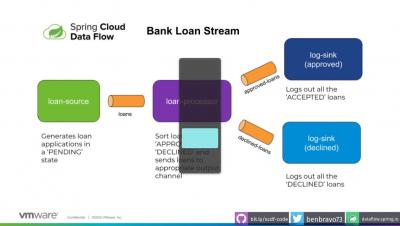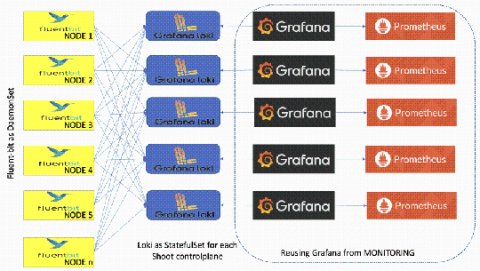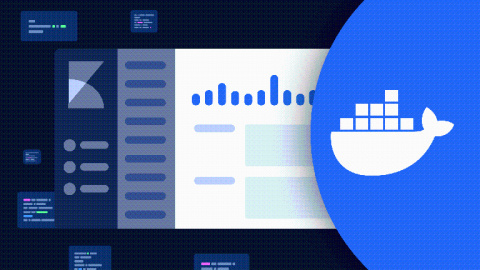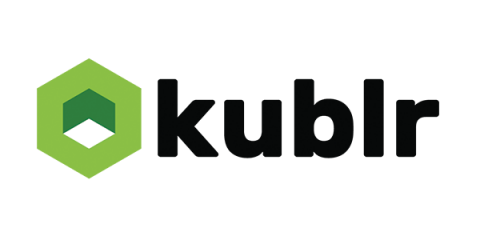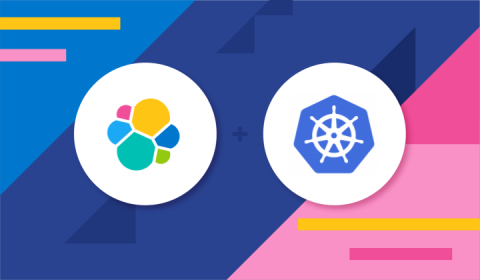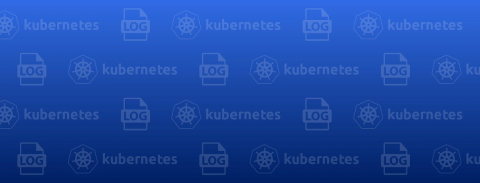Operations | Monitoring | ITSM | DevOps | Cloud
Containers
The latest News and Information on Containers, Kubernetes, Docker and related technologies.
Announcing Spring Cloud Data Flow for Kubernetes
Spring Cloud Data Flow first emerged in 2015 as an evolution of the innovative Spring XD. Since then, hundreds of organizations such as CoreLogic have adopted this open source technology, which is available on Cloud Foundry and Kubernetes. Generally available today, Spring Cloud Data Flow for Kubernetes addresses the needs of streaming and batch processing in the enterprise. This new offering is only available through the VMware Spring Runtime subscription.
Gardener, SAP's Kubernetes-as-a-service open source project, is moving its logging stack to Loki
Kristian Zhelyazkov is a developer at SAP working on Gardener, the SAP-driven Kubernetes-as-a-service open source project. In this guest blog post, he explains why the project is moving its logging stack to Loki.
Managing Docker Logs with ELK and Fluentd
This article provides an overview of managing and analyzing Docker logs and explores some of the complexities that may arise when looking through the log data. We will go through the default logging approach, as well as look at some more advanced configurations that will make diagnosing issues in your Docker-hosted applications much easier going forward.
Crafting Kubernetes Custom Controllers With Angela Chin
A Look at the New Calico eBPF Dataplane
Calico was designed from the ground up with a pluggable dataplane architecture. The Calico 3.13 release introduced an exciting new eBPF (extended Berkeley Packet Filter) dataplane targeted at those ready to adopt newer kernel versions and wanting to push the Linux kernel’s latest networking capabilities to the limit.
SUSE Acquires Rancher Labs: Is the Cloud Native Promise Under Threat from Consolidation?
When SUSE, the world’s largest independent open source company, announced its acquisition of Rancher Labs in early July 2020, the industry took notice. Clearly, the Kubernetes management industry is very much alive. But, the merger also raised the question of what this means for users? After all, a key value proposition of cloud native technologies, like SUSE, is that they are modular, interoperable, and flexible.
Kubernetes observability tutorial: Monitoring application performance with Elastic APM
This post is the third in our Kubernetes observability tutorial series, where we explore how you can monitor all aspects of your applications running in Kubernetes, including: We’ll discuss using Elastic Observability to perform application performance monitoring (APM) with the Elastic APM.
Kubernetes Log Management: The Basics
Log messages help us to understand data flow through applications, as well as spot when and where errors are occurring. There are a lot of resources for how to store and view logs for applications running on traditional services, but Kubernetes breaks the existing model by running many applications per server and abstracting away most of the maintenance for your applications. In this blog post, we focus on log management for applications running in Kubernetes by reviewing the following topics.
Instant scale up for even the most dynamic ECS clusters
One of the key features of Ocean by Spot is a “headroom” feature, the ability to maintain a dynamic buffer of spare capacity for immediate scale-up. Ocean continuously predicts which workloads are most likely to require scale-up and adjusts headroom in line with this prediction to enable immediate scheduling of new tasks, without waiting for infrastructure provisioning. This shortens the time to execution for these workloads and dramatically speeds up the scale-up process.


